APPEARANCE OF EARLY CHINESE SCRIPT
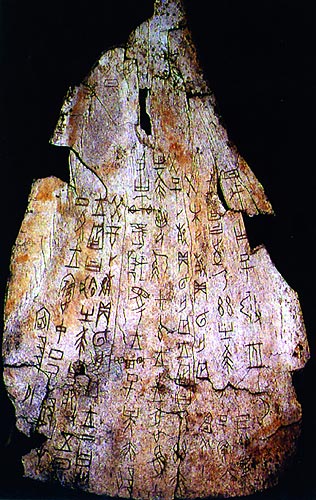 |
The oldest known Chinese characters were found on this 3000-year-old oracle bone inscription. The strokes are generally thin, like children's sketches, and the size varies. |
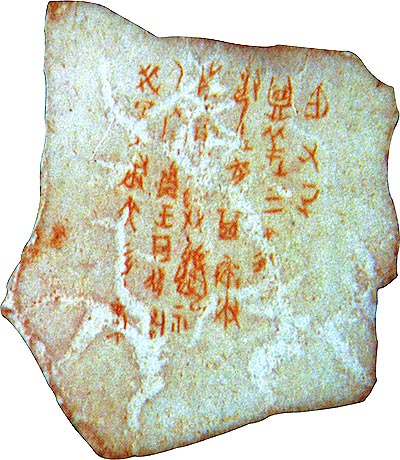 |
Oracle bone inscription in the Western Zhou Dynasty(11th century - 771 B.C.). The letters are so small that they can be read only under a magnifying glass. |
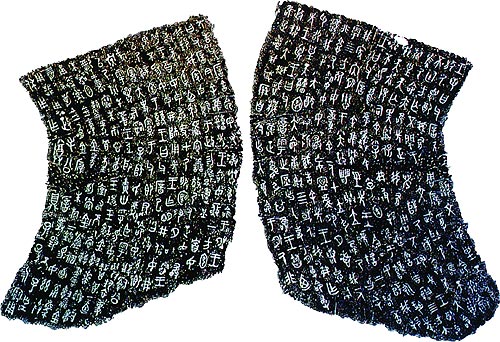 |
Anothere primitive Chinese script contemporary with the oracle bones was Jinwen (Inscribed Script). These characters were generally inscribed on bronze ware, with thicker strokes and more regular sizes. |
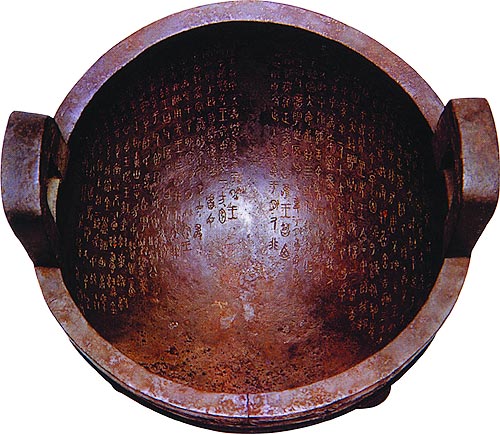 |
The MaogongDing (tripod )bears the earliest known text of that time. |
ARCHAIC CODES: SCRIPT OF THE WARRING STATES PERIOD
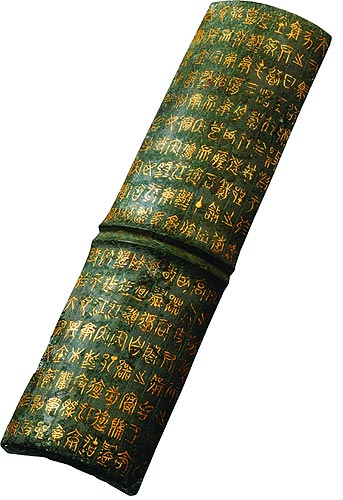 |
Bamboo-shaped brass pass, owned by Ejunqi of the Chu State. |
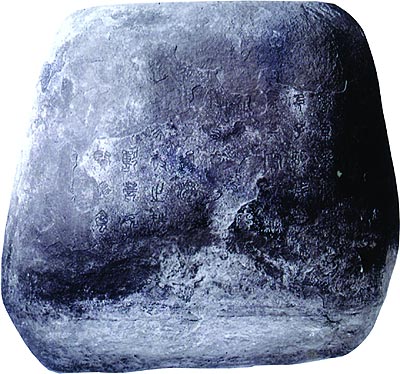 |
Stone drum inscribed with Dazhuan (Big Seal) characters from the Qin State. |
 |
During the Warring States Period (475-221 B.C.), China was divided into seven fiefdoms. They differed from each other in various aspects from politics to language. The Warring States scripts are very difficult to decipher. |
 |
Diagram of the evolutiong of Chinese Script. |
TOWARDS ONE CHINESE SCRIPT
 |
After unifying China in 221 B.C., Emperoe Qin Shi Huang ushered in many reforms, including the standardizationg of language. A uniform Chinese language facilitated the integrationg of Chinese cultures, catalyzed China's economic and cultural exchanges, and enhanced social productivity. Above: A portrait of Emperor Qin Shi Huang |
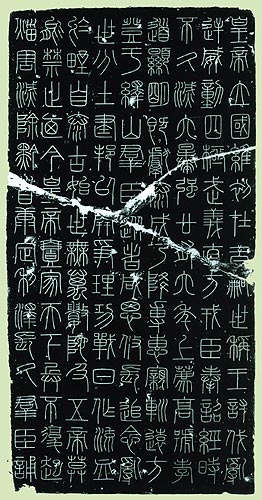 |
Qin's Prime Minister Li Si simplified the original Dazhuan (Big Seal) Script of Qin and invented a standard system of writing for the whole China - xiaozhuan (Small Seal). With standardized shape, strokes and structure, this script established the basic formationg for all Chinese characters created ever since. Li Si's Stone Inscription on the Yi Mountain (left). |
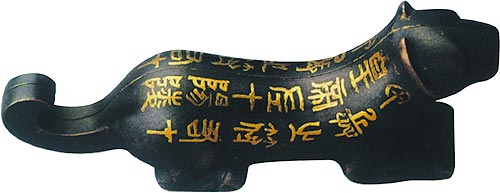 |
Tiger-shaped tally inscribed with small seal script, Qin Dynasty |
LISHU (Clerical Script): REVOLUTION OF CONVENIENCE
 |
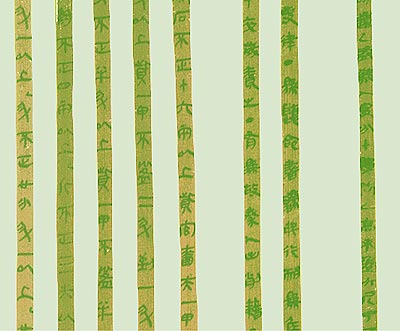 |
 |
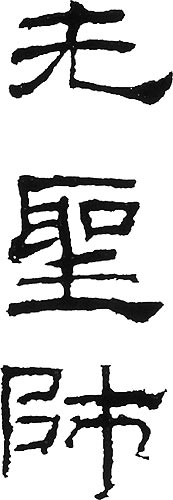 |
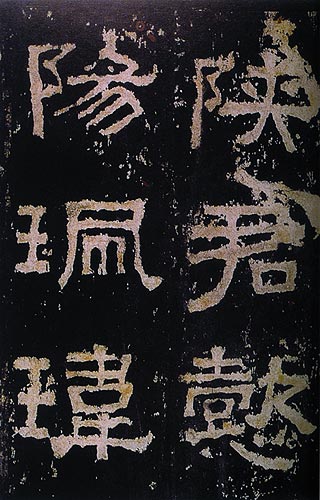 |
| Clerical Script, a kind of hand writing much faster and easier than the small seal, was first used among the common people, and later seen in official documents. After being standardized by Cheng Miao and other officials, it was decreed by Emperor Qin to be the vernacular written characters of the nation. This is a set of bamboo slips written in Qin Clerical Script, from Yunmeng, Hubei province. |